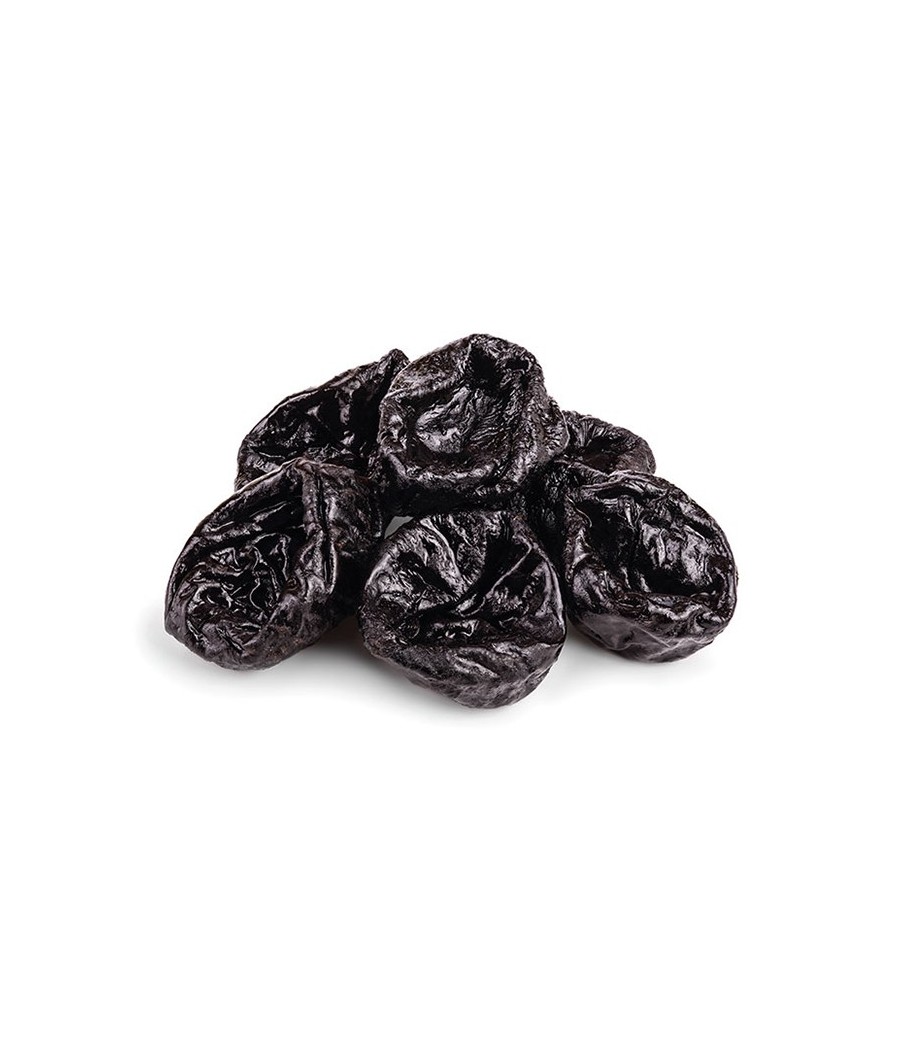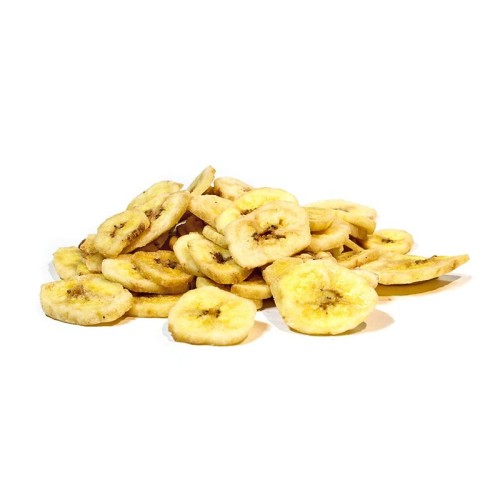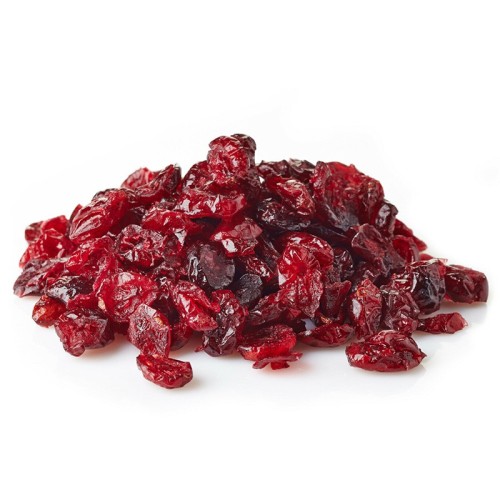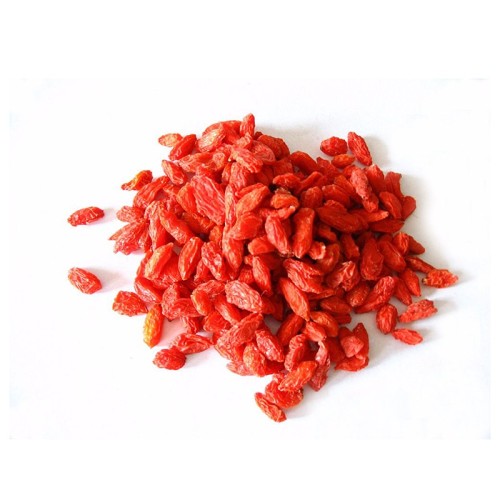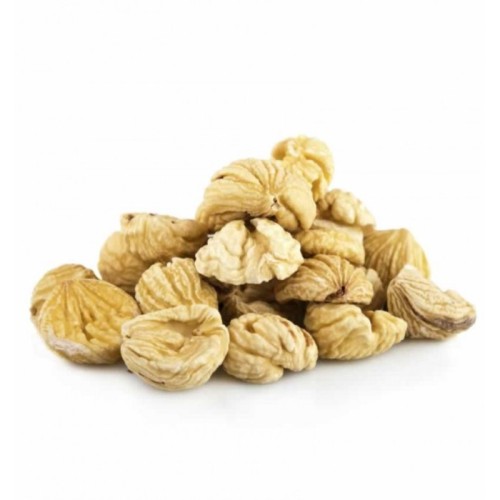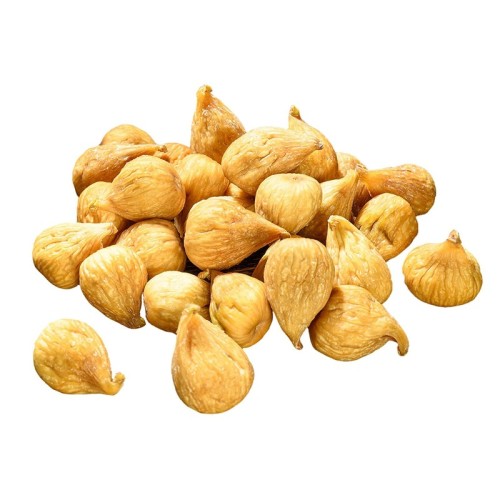Dried Pitted Prunes
(€11.11 Per Kg)
 Security policy
Security policy
Transparency and reliability - Encrypted information (SSL Certificate)
 Delivery policy
Delivery policy
Fast shipping with delivery in 1- 4 working days.
 Return policy
Return policy
24/7
Prunes are low in fat and high in fiber. Great to eat as a snack during the day
Data sheet
- Product
- Plums
Specific References
- ean13
- 8054134416543
Nutritional values
| Ingredients | Ingredients: Prunes, water, shea oil, preservative: potassium sorbate. May contain traces of PEANUTS and NUTS. |
| Method of conservation | Keep in a cold and dry place. |
| Nutrition declaration | average values per 100 g: |
| Power | 992kJ / 235kcal |
| Fats | 0.6g |
| of which saturated fatty acids | 0.1g |
| Carbohydrates | 51 g |
| of which sugars | 36 g |
| Fibers | 8.4g |
| Protein | 2.1g |
| Salt | 0 g |
| Potassium | 384 mg (19% NRV*) |
| Vitamin K | 26 μg (35% NRV*) |
| Source | Euro Company analysis |
| Directions | The advice given IS NOT IN ANY WAY TO BE CONSIDERED OF MEDICAL/PRESCRIPTIVE VALUE. The information provided is for informational and informative purposes only, therefore they are not intended in any way to replace medical advice. In the presence of pathologies you should always consult your doctor. |
| Origin | Chile, France |
| Nutrients | Potassium, Vitamin K |
| Vnr | *Nutritional Reference Value |
| Label and packaging | The images are included for illustrative purposes, the product may undergo changes based on stock availability and the selected weight. |
| Product | Plums |
Curiosity
In the ancient Persian legends, in which the name "Prunus" (to burn) appears, it is told of the habit of feeding the fire using the wood of the tree of this purplish-colored fruit with an elongated shape: the plum.
In the Far East the Pruno, known as the "Japanese apricot", is considered the symbol of spring, youth, renewal and, thanks to the candor of its flowers, purity and immortality.
It is said that Laozi was born under a plum tree and for this reason the tree was particularly revered by the Taoists. In America the wild one, very prolific, became a symbol of fertility for the Pawnee Indians.
The plum has inspired several proverbs, for example: "stare sul pruno", in the sense of being uncomfortable, "being a pruno in someone's eye" alluding to a troublesome person, "every pruno makes a hedge" to say that everything is useful or has its importance.
In the immediate vicinity of Prunus spinosa shrubs and spiny Rosaceae in general, it is not uncommon to find Calocybe gambosa (Fr.) Donk, an excellent edible spring mushroom with an intense floury smell, known by the vulgar name of Blackthorn.
Prunes, appreciated and readily consumed by all age groups, are suitable for human consumption thanks to their nutritional, dietary and health values. They contain almost 90% water and very few lipids. Inside the fruit there are also organic acids (including citric and malic acid), fibers (pectin), aromatic substances and enzymes. These substances determine the nutritional value and flavor of plums. This fruit is also rich in many minerals and vitamins essential for the proper functioning of the human body. The mineral content in plums increases as the fruit ripens. Plums are fruits rich in phenolic compounds, characterized by a relatively high antioxidant activity, higher than that of oranges, apples or strawberries.
Plums have a large number of beneficial effects on the body, including: antioxidant power: plums are rich in polyphenols, substances capable of neutralizing free radicals, responsible for cellular degeneration typical of ageing. laxative action: plums are well known for their laxative properties, so much so that they are sold on the market above all in dried form as an adjuvant for intestinal transit. This property is mainly linked to the presence of sugars such as sorbitol capable of attracting water into the intestinal lumen, to the high fiber content and to oxyphenisatin. Purifying properties: prunes are also used to counteract water retention and for this reason they are often included in herbal products to drain excess fluid from the body.
However, dried plums are not particularly suitable for slimming diets due to their high sugar content. Energetic properties: thanks to the sugars present in abundance, prunes can also be used for energy purposes. This is why they are useful in those conditions where a rapid recharge of energy is needed, without weighing down the body, for example during sport. Prunes are therefore an excellent energy food, thirst-quenching and rich in minerals, suitable for any type of consumer.
Sources
Nutspaper, 1/2018
History
The plum , a particularly ancient fruit introduced in Europe about 20,000 years ago, is native to Eurasia and North America. The first evidence of its presence in Italy dates back to the first century after Christ, when Pliny the Elder, Roman writer, admiral and naturalist, mentioned it in his "Naturalis Historia". Around 150 BC, through the Silk Road, the Greeks and Romans introduced plums in the Mediterranean area.
The Romans planted various varieties of plums (including the "Saint Antonin" plum, also known as the "Maurine" plum, a small blue, dry and small-calibre plum, undoubtedly the oldest and most widespread) in Gaul, in the first Roman province called Narbonensis, which extended up to the current Quercy, at the gates of Agenais.
Subsequently the Knights of the First Crusade brought them throughout Europe around 1200 AD: first in France then in Germany and finally in the other regions. In the 12th century, on their return from the Third Crusade, the Benedictine monks of the Clairac Abbey in the Lot valley (between Agen and Villeneuve) had the idea of grafting local plum trees with new Damascus plum trees brought from Syria .
A new variety was therefore created, called Prugna d'Ente (from the French "enter", which means "to graft"). When the gold rush hit California, many emigrated to the young American state in search of fortune. In addition to gold, they found fertile valleys that helped fulfill the dreams of the pioneers. Louis Pellier, a French winemaker, bought land near Mission San Jose in 1850, christening it Pellier's Gardens. Here he planted his first orchard, grafting onto the local wild plums some plums of the Petite d'Agen quality, one of the finest ever, originating in his land.
In doing so, he inaugurated the world's largest plum cultivation for which California still holds the record today. The plum is also the protagonist of one of the twelve classic volumes of botanical literature by Luther Burbank, the most famous American pomologist, entitled "Little Fruits", where volume IV speaks of the European plum Prunus domestica and its ancestor originating from the Caucasus mountains , near the Caspian Sea.
Burbank has shown that the plum was considered a staple food by Tartars, Mongols, Turks, and Huns. It is currently a plant grown all over the world. In Italy it is found mainly in Emilia-Romagna and in Campania; noteworthy is the cultivation in some areas of Trentino (Dro-Basso Sarca).
Sources
Nutspaper, 1/2018
storage
You can store pitted dried plums in cool, dry places, away from sources of heat and humidity. Here are 4 useful tips:
- The ideal condition for maintaining pitted dried plums is in a refrigerated environment . Dried pitted plums can also be stored without problems at room temperature during the winter season given the low temperatures. During the summer, on the other hand, it is advisable to keep it in the fridge or in the coolest possible place, as the increase in temperatures could favor the deterioration of the products.
- The ideal container in which to store pitted dried plums is glass . In fact, thanks to its constitution it is impenetrable to chemical and gaseous agents, and having excellent thermal insulating capacity it maintains the initial temperature for a longer time compared to other materials. If the glass is colored, so much the better: using colored glass prevents the entry of some wavelengths of light (including ultraviolet light) and therefore some nutritional and organoleptic characteristics remain unaltered.
- The type of closure of the container is also important: an airtight cap ensures that the food is protected from excessive contact with oxygen which can lead to lipid oxidation and which can be essential for aerobic bacteria.
- The environment should always be well ventilated : by ventilating the rooms, the internal humidity that escapes from the window is kept under control, guaranteeing the right balance, which helps to discourage the onset of moulds.
Recommended doses
The beneficial effect of Vitamin K is obtained with a daily intake of about 43 g of plum.
Individual needs vary according to age, gender, weight and physical activity. A varied and balanced diet and a healthy lifestyle are the basis of your well-being.
NB: The pitting takes place with an automatic process, exceptionally some fruits may contain a pit or part of it.
Property
100g of pitted prunes contain:
- Potassium (384 mg – 19% NRV)
- Vitamin K (26 μg – 35% NRV)
- Fiber (8.4 g)
No customer reviews for the moment.

